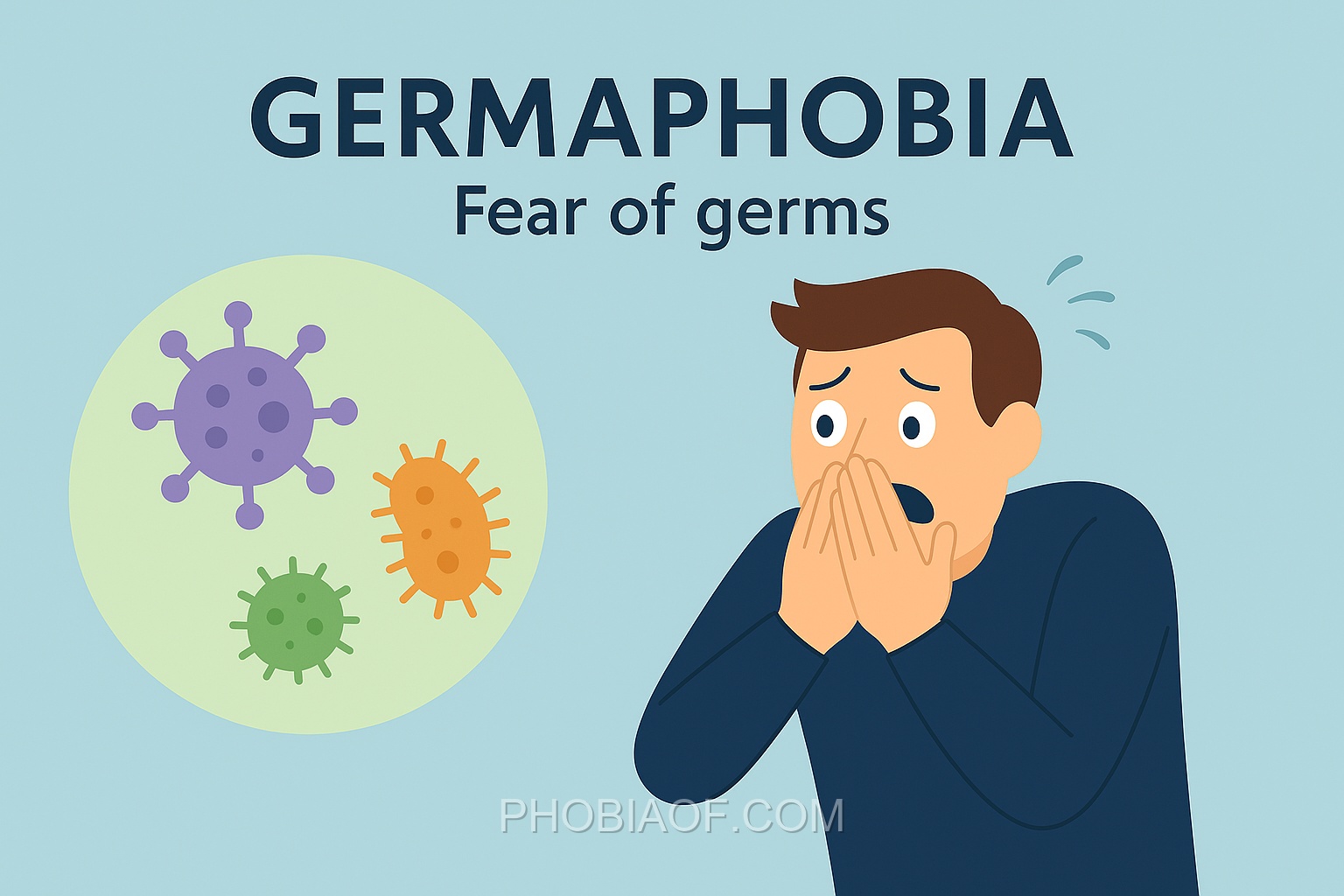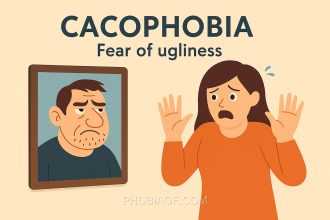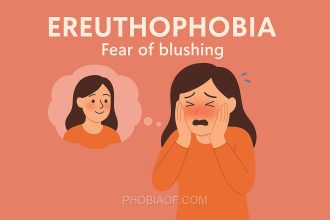Have you ever felt the urge to wash your hands multiple times after touching a doorknob or felt uneasy in a crowded place because of the possibility of germs lurking around?
Germophobia, also known as mysophobia, is a fear of germs that can significantly impact a person’s daily life. The term “mysophobia” has its roots in the Greek words “mysos,” which means dirt, and “phobos,” meaning fear. Essentially, it’s the fear of contamination and dirt.
For someone with germophobia, everyday activities can become a challenge. They might avoid shaking hands, touching surfaces, or being in crowded places due to an overwhelming fear of coming into contact with germs. This fear can lead to behaviors such as excessive hand washing, avoiding certain places, or using hand sanitizers frequently.
While it’s natural to be cautious about germs to a certain extent, germophobia can take this concern to an extreme, affecting a person’s ability to function comfortably in daily life. Understanding this fear with compassion can help in finding ways to manage it effectively.
Causes of Germophobia
Germophobia, also known as mysophobia, is an intense fear of germs and dirt. This phobia can significantly impact a person’s daily life, leading to excessive cleaning and avoidance behaviors. Understanding its causes can help in addressing and managing the phobia effectively.
Genetic Predisposition
Research suggests that genetics may play a role in the development of germophobia. If a close family member has a history of anxiety disorders or phobias, there might be a higher likelihood of developing similar conditions. This genetic link can make some individuals more susceptible to anxiety-related issues, including the fear of germs.
Traumatic Experiences
Experiencing or witnessing a traumatic event related to germs, such as a severe illness or infection, can trigger germophobia. For instance, someone who has suffered from a serious bacterial infection might develop an irrational fear of germs as a protective response.
Learned Behavior
Germophobia can also be a learned behavior. Observing parents or significant others who display excessive cleanliness or express fear of germs can influence an individual’s behavior and beliefs. This modeling can instill similar fears in children, who may adopt these behaviors as their own.
Psychological and Environmental Factors
Several other factors can contribute to the development of germophobia. High levels of stress and anxiety can exacerbate fears, making individuals more vulnerable to phobias. Moreover, media coverage of disease outbreaks and public health scares can amplify fears about germs and contamination.
Theories and Research Findings
An interesting theory suggests that germophobia may be an exaggerated response to the normal human instinct for cleanliness and disease avoidance. While everyone has a natural tendency to avoid illness, for some, this instinct becomes disproportionate, leading to a phobia.
Understanding these causes can assist in developing effective treatment strategies, such as cognitive-behavioral therapy, which helps individuals challenge and change their thoughts and behaviors related to germs.
Symptoms of Germophobia
Germophobia, also known as mysophobia, is characterized by an intense fear or anxiety about germs and contamination. This phobia can manifest in a variety of physical, emotional, and behavioral symptoms. Recognizing these symptoms can be the first step toward seeking help.
Physical Symptoms:
- Panic attacks, which may include shortness of breath, chest pain, or a feeling of losing control.
- Excessive sweating, especially when exposed to perceived germ-laden environments.
- Rapid heartbeat or palpitations when thinking about or encountering germs.
- Trembling or shaking at the thought or sight of dirt or germs.
- Nausea or gastrointestinal distress in germ-related situations.
Emotional and Behavioral Symptoms:
- Intense avoidance of places or situations perceived as germ-filled, such as public restrooms or crowded areas.
- Overwhelming dread or anxiety at the thought of being contaminated.
- Compulsive behaviors, such as excessive handwashing or cleaning.
- Preoccupation with cleanliness, spending significant time worrying about germs.
- Feelings of distress or panic when personal space is invaded or items are touched by others.
When severe, these symptoms can significantly interfere with daily life, making routine tasks and social interactions challenging.
Treatment for Fear of Germs
Overcoming Germophobia, or the fear of germs, is possible with time, patience, and the right approach. It’s important to know that this phobia can be treated and managed, allowing individuals to lead fulfilling lives. Let’s explore some effective treatment options and coping strategies.
Proven Therapies
Several therapeutic approaches have been proven effective in treating Germophobia:
- Exposure Therapy: This therapy involves gradually facing the fear of germs in a controlled and safe environment. By slowly increasing exposure to the source of fear, individuals can reduce their anxiety response over time.
- Cognitive-Behavioral Therapy (CBT): CBT focuses on changing negative thought patterns associated with the fear of germs. By challenging and reframing these thoughts, individuals can develop healthier attitudes and responses.
- Counseling: Speaking with a trained counselor can provide support and guidance. Counseling offers a safe space to express fears and work through underlying issues contributing to the phobia.
Self-Help Coping Techniques
In addition to therapy, there are several self-help coping techniques that can complement professional treatment:
- Relaxation Exercises: Techniques such as deep breathing, progressive muscle relaxation, and visualization can help reduce anxiety and promote a sense of calm.
- Meditation: Regular meditation practice can aid in reducing stress and improving mindfulness, helping individuals manage their phobia more effectively.
- Support Groups: Joining a support group can provide comfort in knowing that others share similar experiences. It offers a platform to exchange coping strategies and encouragement.
Medication
In some severe cases, medication such as anti-anxiety medications may be prescribed by a healthcare professional. However, the primary focus should remain on therapy and coping skills.
If Germophobia is interfering with daily life, it is important to seek professional help. A mental health professional can tailor a treatment plan to suit individual needs and help navigate the path to recovery. Remember, with the right support and strategies, overcoming the fear of germs is within reach.
Conclusion
Understanding the causes and symptoms of germophobia is a crucial step in addressing this common yet often misunderstood fear. By recognizing the underlying factors and identifying the telltale signs, individuals can begin to take proactive steps towards managing their anxiety around germs. This awareness not only empowers those affected to seek out effective strategies but also reduces the stigma often associated with such phobias.
It is important to remember that many people successfully overcome or manage their phobias with time and proper support. Whether through therapy, self-help strategies, or medical intervention, there is a range of options available to help individuals regain control and improve their quality of life. If you or someone you know is struggling with germophobia, consider reaching out to a mental health professional or doctor for guidance and support.
Remember, you are not alone, and help is always within reach. With patience, persistence, and the right resources, overcoming germophobia is entirely possible, paving the way for a healthier and more fearless future.






